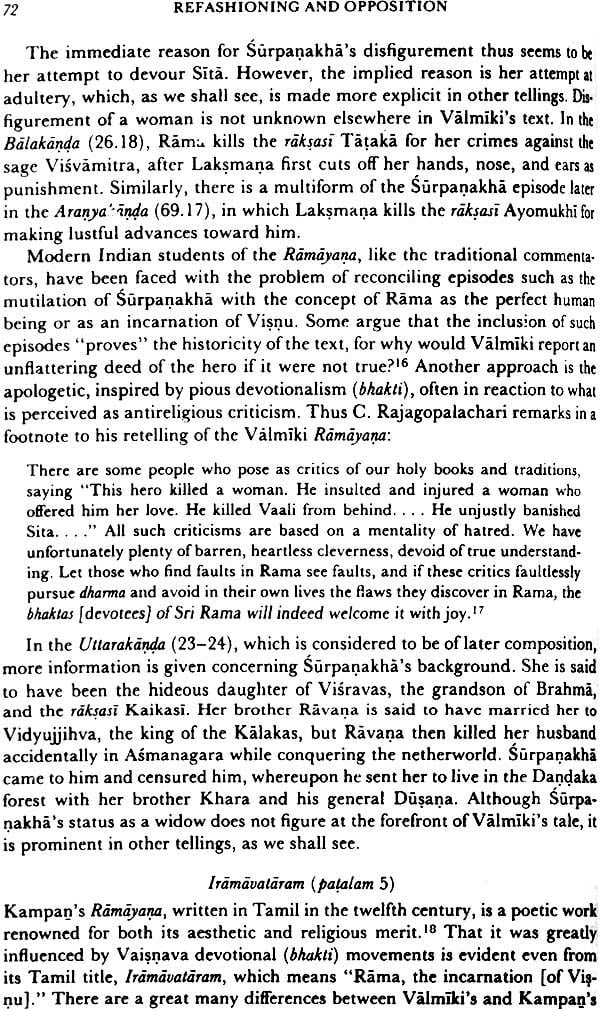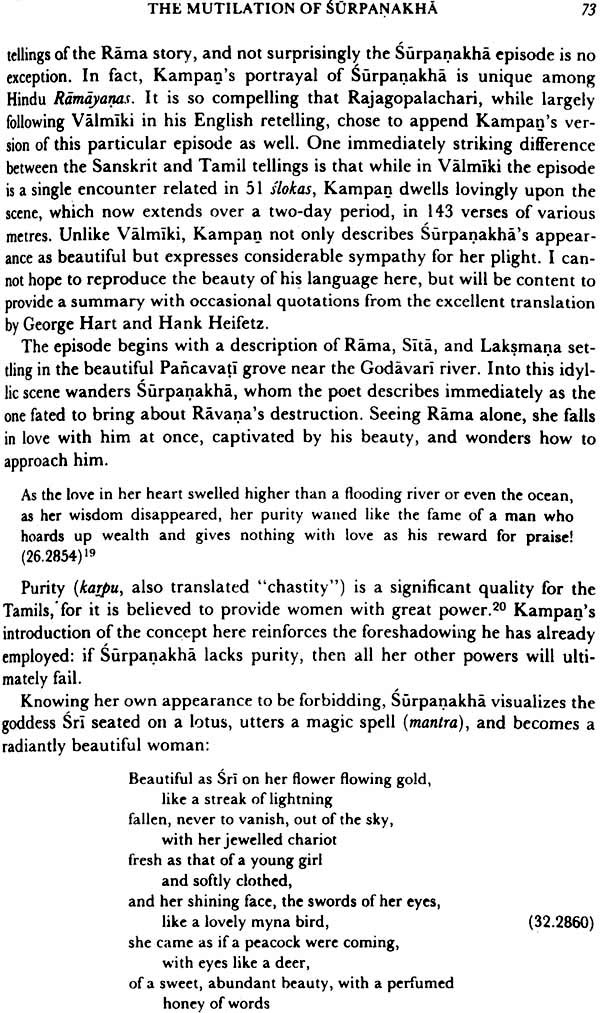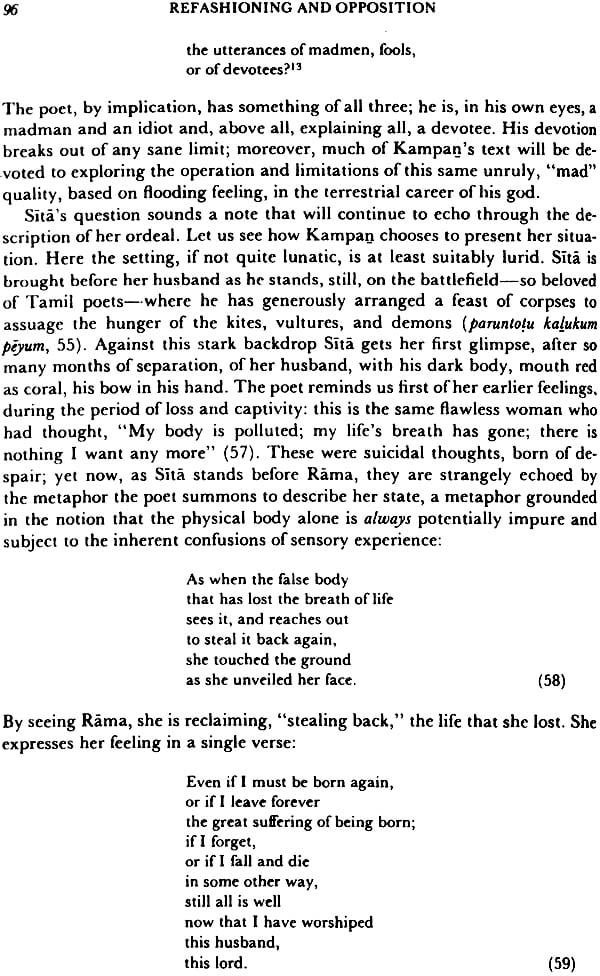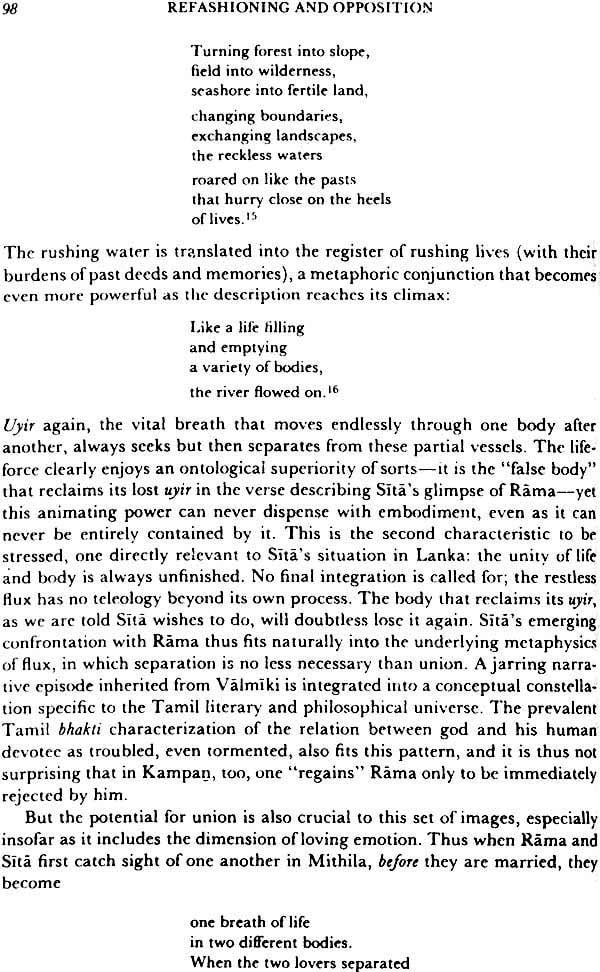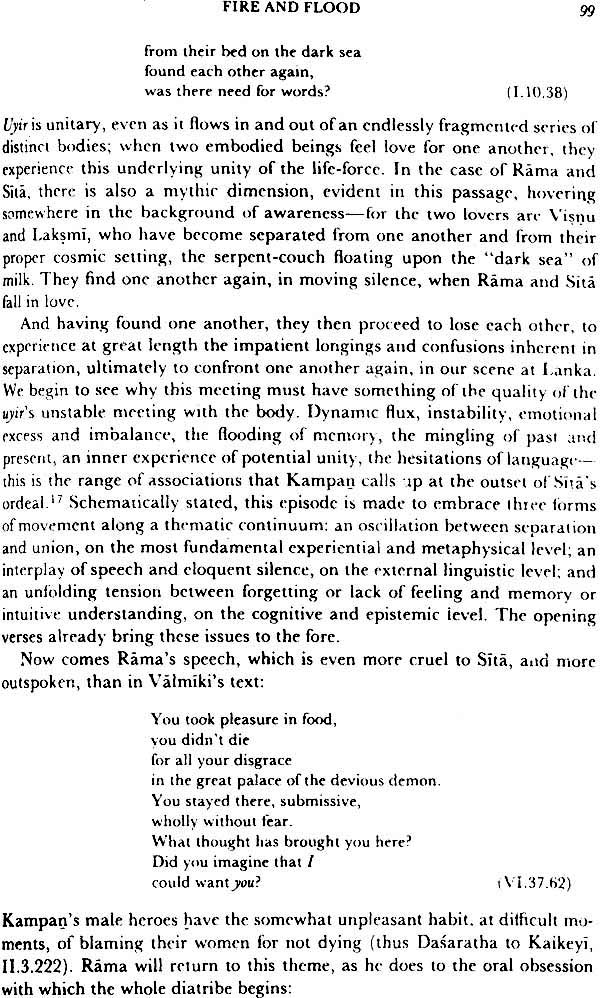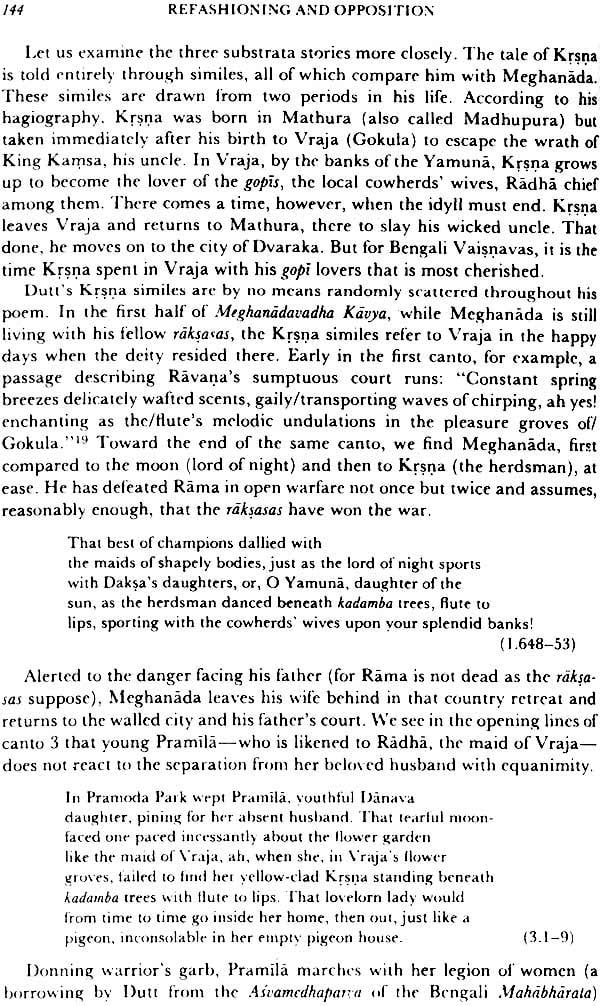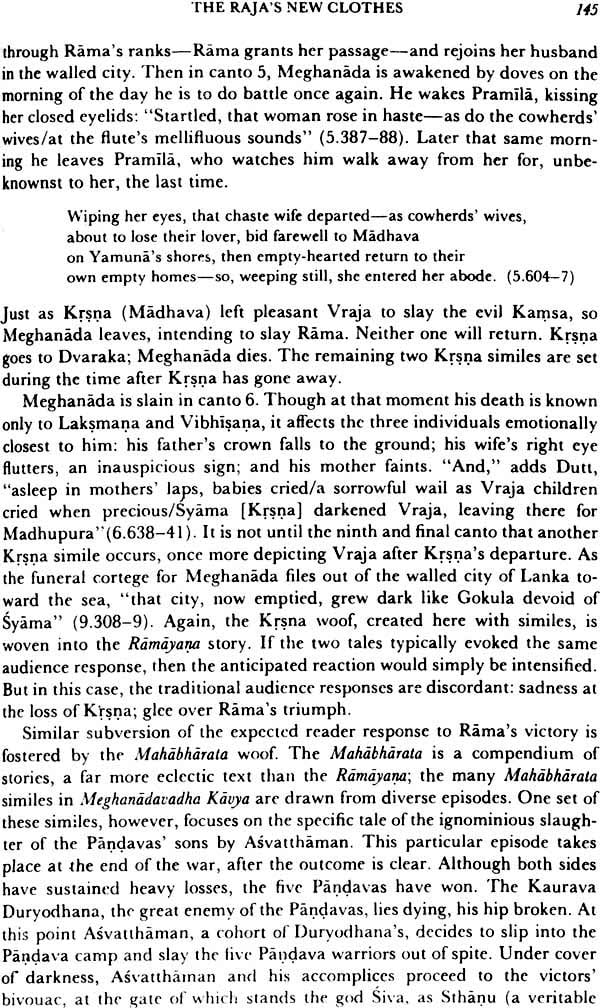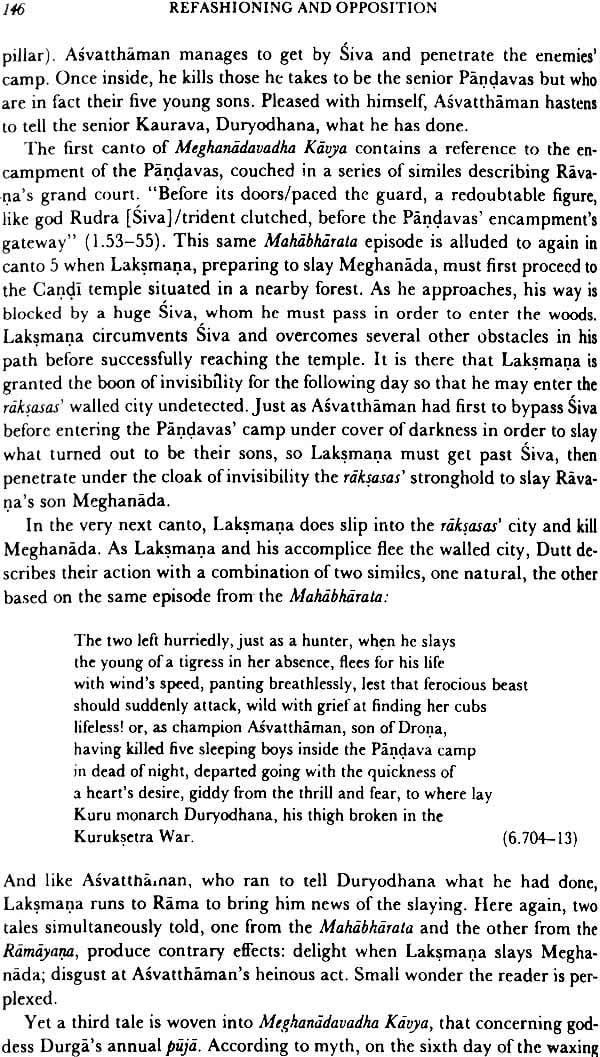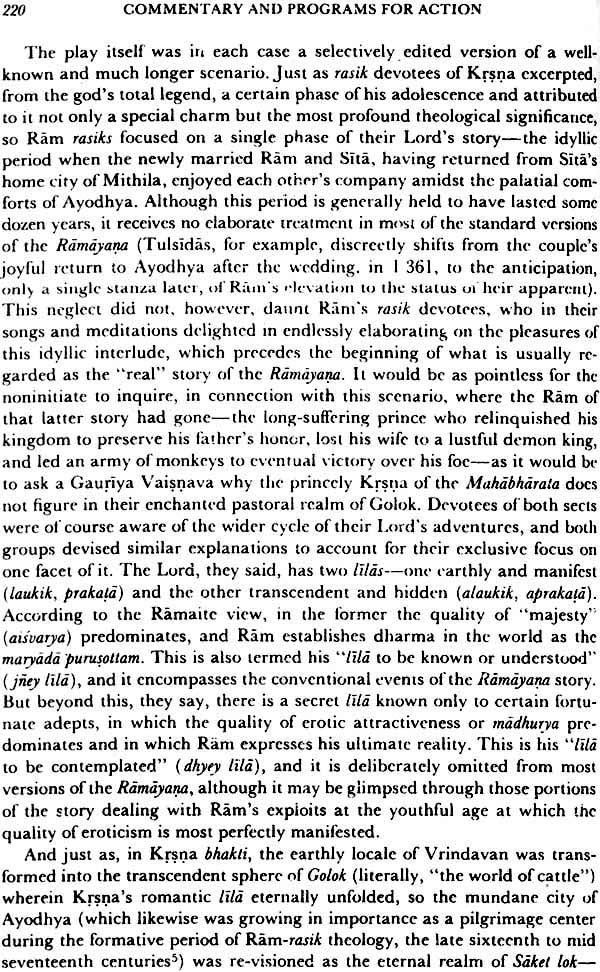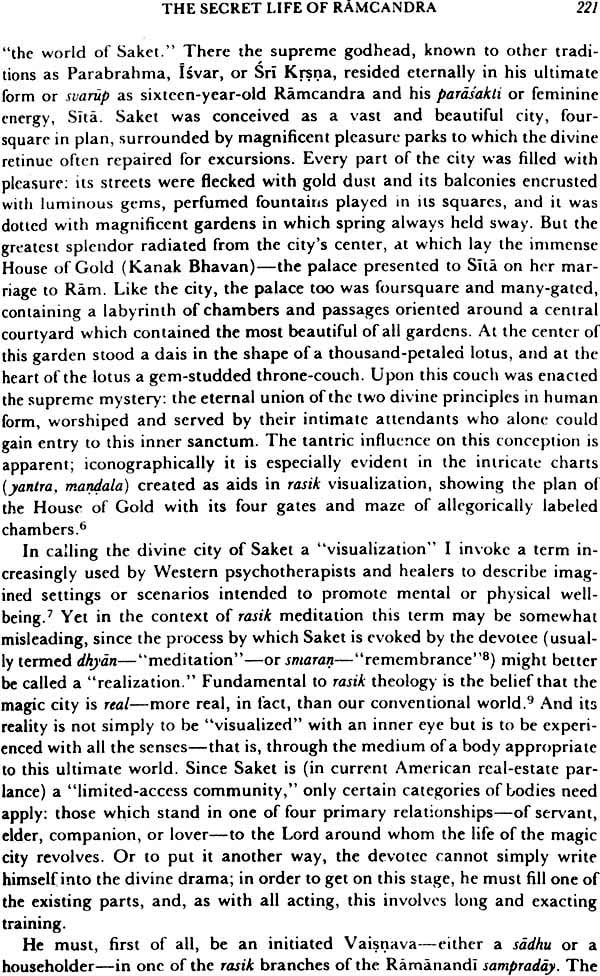
Many Ramayanas (The Diversity of a Narrative Tradition in South Asia)
Book Specification
| Item Code: | NAL068 |
| Author: | Paula Richman |
| Publisher: | Oxford University Press, New Delhi |
| Language: | English |
| Edition: | 1992 |
| ISBN: | 9780195635188 |
| Pages: | 286 |
| Cover: | Paperback |
| Other Details | 8.5 inch X 5.5 inch |
| Weight | 290 gm |
Book Description
Throughout the centuries in India, authors and performers have produced diverse tellings of the Ramayana in numerous media. Even so, most studies of this epic have concentrated on a single telling: Valmiki’s Sanskrit Ramayana. In this volume, distinguished scholars of South Asian literature, religion, and anthropology focus instead on the many Ramayanas influential in Indian culture and on the circumstances that have shaped these varied tellings of the Rama story.
Exploring the diversity of the Ramayana tradition, several contributors to the volume examine incidents that appear to undermine Rama’s status as moral exemplar, while others focus on tellings of Rama’s story that contest Valmiki’s version of the events. A number of essays demonstrate how members of non-dominant groups have recast the Rama story to reflect their own views of the world, or how selected incidents of the epic have become the basis for teachings about religious liberation or demands for political separatism.
Together, the essays demonstrate that the Ramayana is multivocal, encompassing telling of Rama’s story that vary with regional literary tradition, social location, gender, religious affiliation, colonial context, intended audience, and genre.
Paula Richman is William H. Danforth Professor of South Asian Religious at Oberlin College in Oberlin, Ohio, USA, and specializes in the history of Indian religious.
This book began to my puzzlement. For years I had heard people refer to E. V. Ramasami’s interpretation of the Ramayana in a mocking and dismissive way. When I actually analyzed his reading of the story of Rama, however, I found much of it strikingly compelling and coherent if viewed in light of his anti-North Indian ideology. While I was talking one day with A.K. Ramanujan about my attempts to make sense of this particular reading of the Rama story, he gave me a copy of a paper he had presented entitled “Three Hundred Ramayanas.” I read this piece again and again because it challenges us to look at the Ramayana tradition in a new way. Each contributor 2 of this volume. Every other chapter can be seen, in some way, as a response to some of the questions that Ramanujan raises.
As individual essays developed, intriguing patterns within the Ramayana tradition were revealed. I encouraged authors to explore the exact ways in which the tellings of the Rama story that they had studied related to particular theological, social, political, regional, performance, or gender contexts. Slowly the book grew in the direction of a study of telling of the Ramayana that refashion or contest Valmiki’s text. I am grateful to Raman for giving us his essay and to each contributor for the many revisions made to ensure the overall coherence of the volume.
A number of scholars encouraged me during the many stages of this book: Michael Fisher, whose initial enthusiasm for the project encouraged me to pursue it and whose advice at every stage I have deeply valued; Client Seely, who believed in the worth of the endeavor and invited two authors to contribute to the volume; Robert Goldman and Sally Sutherland, who offered both textual and practical advice during the period when I was conceptualizing the volume’s overall structure; David Shulman, from whom I have learned a great deal about the Ramayana tradition and whose suggestions for revising the introduction were greatly appreciated; Philip Lutgendorf and H. Daniel Smith, both of whom shared their knowledge of Ramayana tradition and gave me a number of valuable comments; Sandria Freitag, Wendy Doniger, and an anonymous reader on the Editorial Committee of the University of California Press, whose challenging questions and insightful suggestions for revisions made this book more coherent, complete, and concise; Lynne Withey, my editor, whose intelligence, efficiency, and graciousness have been greatly appreciated; Pamela MacFarland, whose attention to detail has improved this volume in myriad ways. To all these people I express my thanks; I alone am responsible for any shortcomings.
The research, editing, and completion of this book would have been impossible without a great deal of assistance. At Oberlin College’s Mudd Library I want to thank Ray English, Kerry Langan, Valerie MacGowanDoyle, and Anne Zald, and at Western Washington University’s Miller Library Evelyn Darrow and Jo Dereske, for tracking down unbelievably obscure works in a number of South Asian languages. Similar feats were performed by James Nye, William Alsbaugh, and Lynn Bigelow in Regenstein Library of the University of Chicago. I am also grateful to Kenneth Logan, Barbara Gaerlan, and Sumathi Ramaswamy for assisting me at the South Asia Centre at the University of California, Berkeley. A grant from the Research and Development Fund at Oberlin College made research trips to Berkeley and Chicago possible. Susan Munkres and Daniel Gardiner read drafts of each paper in the volume, making insightful and helpful suggestions for improving clarity. Many of my students during 1989 and 1990 came to share my enthusiasm for the Ramayana tradition; I am grateful for their interest and intriguing queries. Thanks goes to the office of Ira Steinberg, which funded part of the cost of duplicating the manuscript. I appreciate the institutional support provided by William Stoever at Western Washington University during the summer of 1989. Thelma Kime and Terri Mitchell typed innumerable drafts of several of the papers in this volume. I appreciate their patience and dedication.
| Preface | xi | |
| A note on transliteration | xiii | |
| 1 | Introduction: The Diversity of the Ramayana Tradition | 3 |
| 2 | Three hundred Ramayanas: Five Examplers and Three thoughts on Translation | 22 |
| 3 | Ramayana, Rama Jataka and Ramakien: A Comparative Study of Hindu and Buddhist Traditions | 50 |
| 4 | The Mutilation of Surpanakha | 67 |
| 5 | Fire and Flood: The Testing of Sita in Kampan's Iramavataram | 89 |
| 6 | A Ramayana of Their Own: Women's Oral Tradition in Telugu | 114 |
| 7 | The Raja's new clothes: Redressing Ravana in Meghanadavadha Kavya | 137 |
| 8 | Creating Conversations: The Rama Story as Puppet Play in Kerela | 156 |
| 9 | E.V. Ramasami's Reading of the Ramayana | 175 |
| 10 | Ramayana Exegesis in Tenkalai Srivaisnavism | 202 |
| 11 | The secret life of Ramcandra of Ayodhya | 217 |
| 12 | Personalizing the Ramayan: Ramnamis and their use of the Ramcaritmanas | 235 |
| Life of contributors | 257 | |
| Index | 261 |
